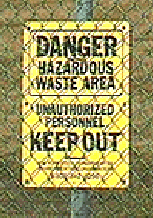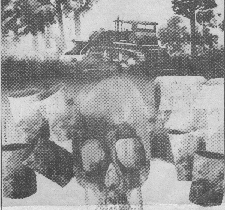Michael Fumento
Factual · Powerful · Original · Iconoclastic
Footnotes in the Love Canal
January 01, 1996 · Michael Fumento · The Washington Times · Agent
It closes a chapter in what has been called "the nation’s most notorious toxic dumping case." The Occidental Chemical Corporation has agreed to pay $129 million to cover the federal government’s cleanup costs at Love Canal, New York.
The problem is that the federal officials, who like all victors are the ones who write the history, have written a history that has little connection with reality.
Under the settlement, the EPA Superfund will receive $102 and the Federal Emergency Management Agency, which handled the relocation of Love Canal residents and initial cleanup, will receive $27 million. (Last year, Occidental agreed to pay New York $98 million toward the cleanup of the site. The state originally sought $630 million in damages.)
"Today we celebrate a transformation of an environmental disaster called Love Canal into a success story," Attorney General Janet Reno said at a press conference announcing the settlement. "It stands for the principle that when people make a mess, they should pay to clean it up." Hmm . . . Does that mean that Miss Reno is going to go to Waco, Texas and roll up her sleeves and start picking up debris?
Nobody questions that Occidental, or rather its predecessor, Hooker Chemicals & Plastics Corp., buried 22,000 tons of chemical waste in a half-dug canal from 1942 to 1953. Rarely mentioned, however is that Hooker tried desperately to convince the city of Niagara Falls (where Love Canal is located) not to build on the site.
As consumer advocate Eric Zuesse pointed out in a 1981 Reason magazine article, the city school board applied massive pressure to obtain the land despite Hooker’s repeated warnings of potential health hazards. Finally Hooker gave in and sold the land for a symbolic dollar bill. It insisted, though, that the land was to be used for a school or parking lot or playground but was under no circumstances to be excavated.
Instead, the city decided to build a housing development on the site, digging into the protective clay covering and laying sewer lines through the waste. Then it sold the plots to unsuspecting home buyers.
Hooker had no choice but to dump its toxic waste somewhere. It was the city’s choice to bring people to that somewhere. The bad guy wasn’t the big faceless corporation, it was your friendly city government.
The second part of the Love Canal myth is that residents began suffering a health disaster in the late 1970s. As I documented in my book Science Under Siege, nobody at Love Canal complained of any exceptional illnesses until a muckraking environmentalist reporter for the local paper began a series of articles telling the people that they were sitting on a toxic waste site. Lo and behold, from then on every illness in the town was blamed on the ingredients brewing beneath the surface. It even made national news when one family’s dog began inexplicably vomiting.
The media descended upon the town and relayed to the outside world every sneeze, every cough, and every ache and pain experienced by Love Canal residents, making it clear that they could only be caused by toxic waste, which included the dreaded dioxin.
The EPA and the governor of New York swaggered around, condemning the chemical company and promising to make everything better, no matter the cost. Ultimately tens of millions of dollars were spent evacuating the residents.
Only later did the truth begin to seep out. Study after study conducted by the federal government and the State of New York Department of Health found that Love Canal residents had no more illness than would be expected in any other area of similar size. Believe it or not, dogs who don’t live on top of toxic waste dumps also vomit.
A New York Times editorial predicted correctly in 1981 when it said, "it may well turn out that the public suffered less from the chemicals there than from the hysteria generated by flimsy research irresponsibly handled."
Somehow, none of this was mentioned at the aforementioned press conference. Instead, EPA Administrator Carol Browner used the myths of Love Canal to blast congressional Republican efforts to cut back on enforcement of environmental laws. Love Canal led to the creation of the Superfund for the cleanup of environmental hazards.

In seeking to reduce environmental spending by $25 million, she said, "Congress is attempting to roll back the environmental health protections that Superfund brought to Love Canal." Since there was never any health threat at the Love Canal, obviously Superfund brought no protections there.
In any case, it’s too bad Browner didn’t go farther to point out that Superfund, according to the Office of Technology Assessment, could soak up an amazing $500 billion over the next few decades. While a few of these toxic waste sites may pose a real hazard to persons living nearby, most have posed no demonstrated threat as large even as making dogs upchuck.
Sometimes people fight back. The citizens of Leadville, Colorado successfully fought the EPA’s needless effort to scrape the lead out of Leadville’s soil. (Anyone for "Ville" Colorado?). Like so much of what the EPA does, it was nothing but makework for a bloated and arrogant agency.
